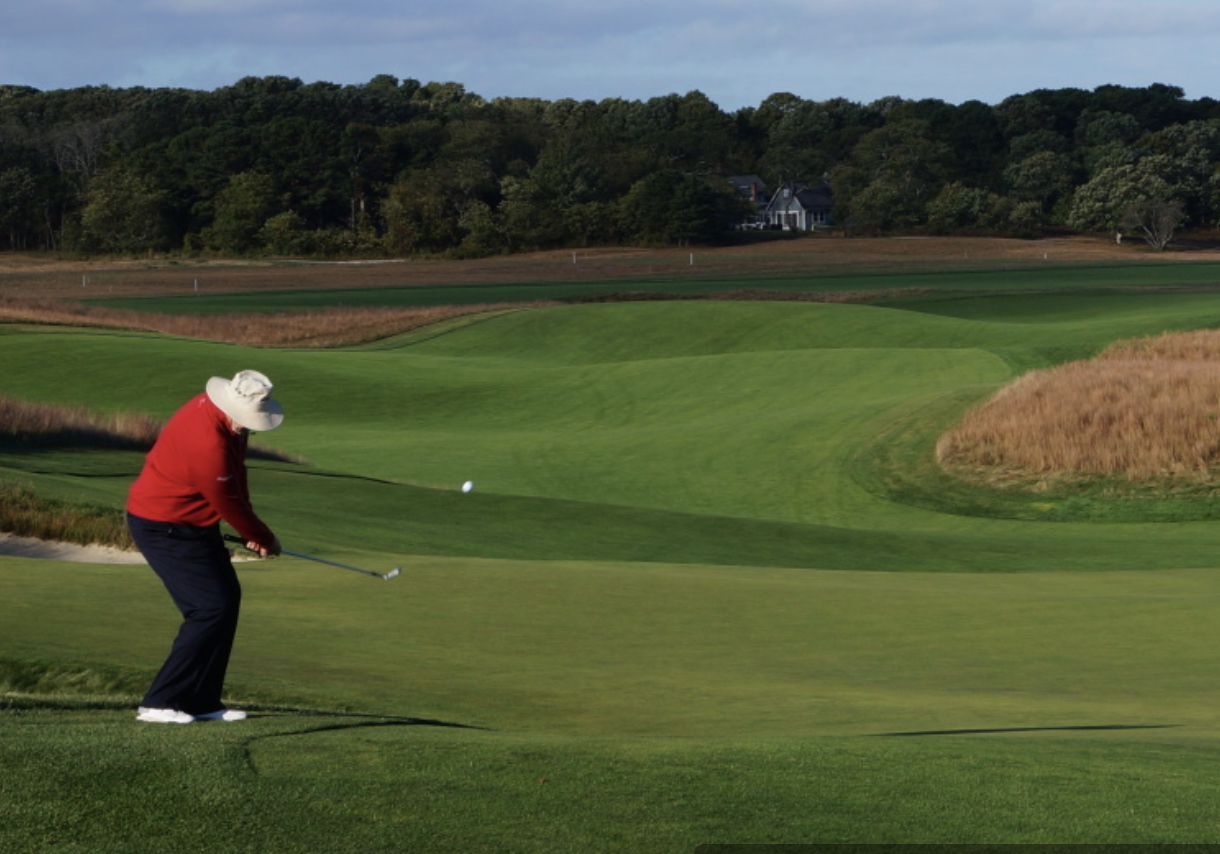Scoring tips from the short game guru
- When golfers are practicing, what percentage of time should they dedicate to short game and putting?
I’d like to see golfers divide their practice time into thirds: One-third on the short game, one-third on putting, and one-third on the full swing, in that order. The first part of practice should always be dedicated to preparing for the par-5 wedge approaches and greenside shots they’re certainly going to face. Lag putting before a round will get your putting muscles engaged and also show you how the greens are rolling. I’d like to see golfers develop high, mid and low shots they can trust when 14 to 20 yards from the pin, because that’s a distance you’re going to find yourself recovering from frequently.
- Why don’t more people do that?
Most golfers spend 80 to 90 percent of their practice time hitting woods and irons because they want to be sure they’re “dialed in” to their swing fundamentals. They say, “If I can’t get to the green, then nothing else matters.” But the truth is, and our data shows this, golfers actually lose 80 percent of their shots to par from inside of 100 yards. So you really need to make time to practice your short game and putting. Not having time to travel to a good practice facility is another factor. The good news is you can practice your short game and putting habits anywhere. Grab a laundry basket at home and some backyard-safe practice balls (almostGOLF™ balls are great) and practice hitting to a target you’ve set at a known distance. There are also great teaching aids available to work on your putting at home on your carpet.
- What’s the biggest mistake people make when hitting pitch and chip shots?
Ball position is a killer for many golfers. Most golfers don’t chip with the ball far enough back in their stances. Playing the low-running chip (with a 7- or 8-iron so the ball comes off low and rolls out) off your back foot will help you avoid hitting it fat. A pitch shot should be played with a more-lofted wedge and the ball positioned in the center of your stance.
- What’s the biggest mistake people make when putting – especially inside five feet?
Most golfers practice putting without feedback. They simply putt. Practicing with learning aids can help you determine if your misses and makes are a product of aim, stroke or green reading. You have to know this if you’re going to improve your weaknesses and putt consistently. I don’t intend to do a plug for the Putting Tutor – which I designed with Phil Mickelson – but helps golfers groove a good stroke, aim putts and work on green reading. Feedback is crucial.
- Should average golfers really have a 60-degree wedge in their bag?
Absolutely. The way present-day greens and their surroundings are designed, you have to have loft and good spin to stop the ball close to the hole. A 60-degree wedge is no more difficult to hit than a 52- or 56-degree club – if you accelerate the clubhead through and past impact. Once a golfer uses a lob wedge for a while, it becomes a favorite club and a go to weapon. Without it, you’re just making the game harder. All the tour pros use 60-degree wedges, and the more greens you miss, the more you need one.
- How much of an impact do different grass surfaces have regarding short game techniques?
When you find your ball, you have to assess its lie before you decide how you’re going to play the next shot. For soft, fluffy lies, you’ll want a club with more bounce. Less bounce for shots from tight lies. If you’re catching the ball cleanly and playing the right amount of bounce, you’ll manage different grasses just fine. Firm and fast conditions will put a premium on clean contact and the proper amount of backspin.
- If you could change one thing in golf unilaterally – what would it be and why?
I’d let amateurs anchor their putters if they wanted to and I’d give them back their boxed-grooved wedges.
- The major golf organizations – USGA, R&A, PGA of America, PGA Tour and LPGA Tour – are all seeking ways to attract new players to the game. This is especially so with millennials, women and minorities. If you were counseling them – what would you advise be done?
Non-traditional golf venues like Topgolf are great, but imagine what we could do if we reinforced new-golfer participation by allowing people to learning the game “from-the-hole-out.” Nobody is going to master the 280-yard drive with a baby cut right off the bat. You have to have instruction and suitable venues where people can learn to go from short putts to longer putts and from chips shots to pitches, before they get thrown into full swings. Golf’s learning curve can be steep enough to scare people away. So we have to address that by keeping putting and the short game fun and engaging with games, drills and quality instruction.
- We’re curious… if you had to rank the top short games you’ve ever seen, who would you select?
Phil Mickelson has the best short game ever, but Patrick Reed is nipping at his heels. Ben Crenshaw is the best putter I’ve ever seen, with Brad Faxon and Jordan Spieth being almost as good.

